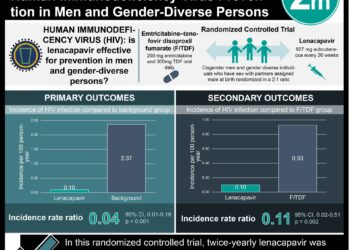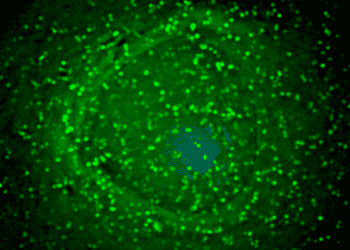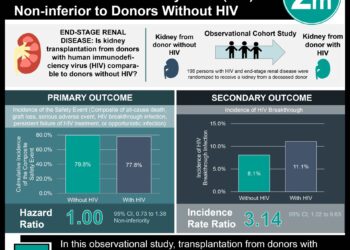HBV and HCV coinfection may increase non-Hodgkin’s lymphoma risk in HIV-infected patients
1. Compared to the HIV-negative population, chronic hepatitis B virus (HBV) and hepatitis C virus (HCV) coinfection was found to be associated with a greater risk for non-Hodgkin lymphoma (NHL) in HIV-infected patients receiving antiretroviral therapy (ART).
2. To reduce morbidity and mortality from NHL in HIV-infected patients, it is important that HIV infection be diagnosed and treated early and for routine HBV and HCV screenings to be done.
Evidence Rating Level: 1 (Excellent)
Study Rundown: Compared to the HIV-negative population, people infected with HIV have an incidence rate of NHL that is approximately 10 times greater. Chronic HBV and HCV coinfection is suspected to be associated with NHL in HIV-negative people. It is unclear if this association also exists in the HIV-infected population. To examine whether or not there was such an association, this prospective cohort study followed 52 479 patients from 18 of 33 cohorts from the Collaboration of Observational HIV Epidemiological Research Europe (COHERE). Compared to the HIV-negative population, chronic HBV and HCV coinfection was found to be associated with a greater risk for NHL in HIV-infected patients receiving ART. Therefore, to reduce morbidity and mortality from NHL in HIV-infected patients, it is important that HIV infection be diagnosed and treated early and for routine HBV and HCV screenings to be done.
A key strength of the study was that this was the first large prospective cohort study that found an association between NHL and chronic HBV and HCV coinfection in HIV-infected patients. Past studies that did not find such an association were case-control studies or cohort studies of a smaller scale. One limitation of the study was that the analysis was restricted to the patients from COHERE who provided information regarding chronic HBC and HCV infection. In addition, screening and data collection for HBV and HCV coinfection were not ideal. Thirdly, it is possible that reactivation of HBV in extremely immunosuppressed patients receiving ART or resistance of HBV to lamivudine could have be a reason for the increased risk for NHL that was detected in patients who were coinfected. Also, NHL cases were merged due to NHL type being unclassified for a large number of cases, which meant that analysis by NHL subtype was not possible.
Click to read the study, published today in the Annals of Internal Medicine
Relevant Reading: Hepatitis B and C viruses and risk of non-Hodgkin lymphoma: a case-control study in Italy
In-Depth [prospective cohort]: This study followed 52 479 patients who were treatment-naïve, including 1339 who had chronic HBV infection, 7506 who had chronic HCV infection, and 210 who were infected with both. ART was later started by 40 219 of these patients. Patients were studied during the time that they were ART-naïve and during ART therapy (if treatment was started). The main outcome studied was the time period until NHL diagnosis. ART-naïve patients and ART-treated patients had a median follow-up of 13 months and 50 months, respectively. During the time of follow-up, 252 ART-naïve patients and 310 ART-treated patients were diagnosed with NHL. Per 100 000 person-years, the incidence rates were 219 and 168 cases, respectively. Chronic HBV and HCV coinfection was found to be associated with a greater risk for NHL in HIV-infected patients receiving antiretroviral therapy (ART) compared to the HIV-negative population. Estimates in patients who were ART-naïve were unclear due to insufficient power.
Image: PD
©2016 2 Minute Medicine, Inc. All rights reserved. No works may be reproduced without expressed written consent from 2 Minute Medicine, Inc. Inquire about licensing here. No article should be construed as medical advice and is not intended as such by the authors or by 2 Minute Medicine, Inc.







